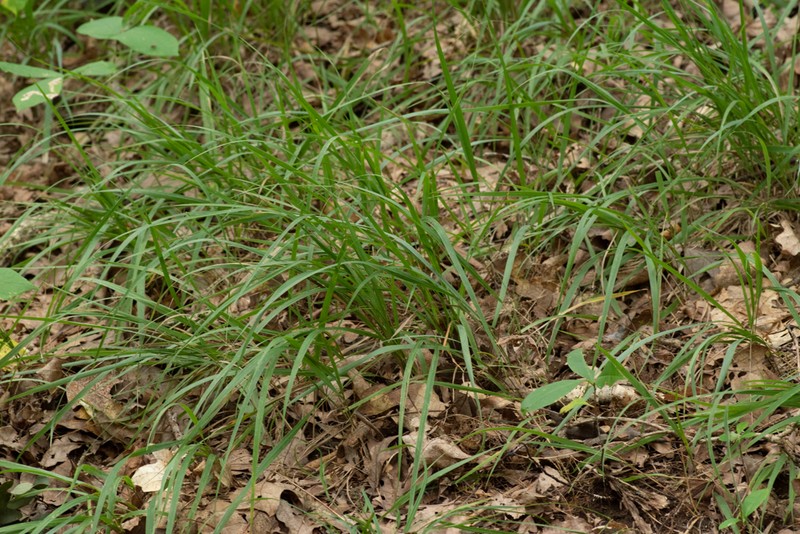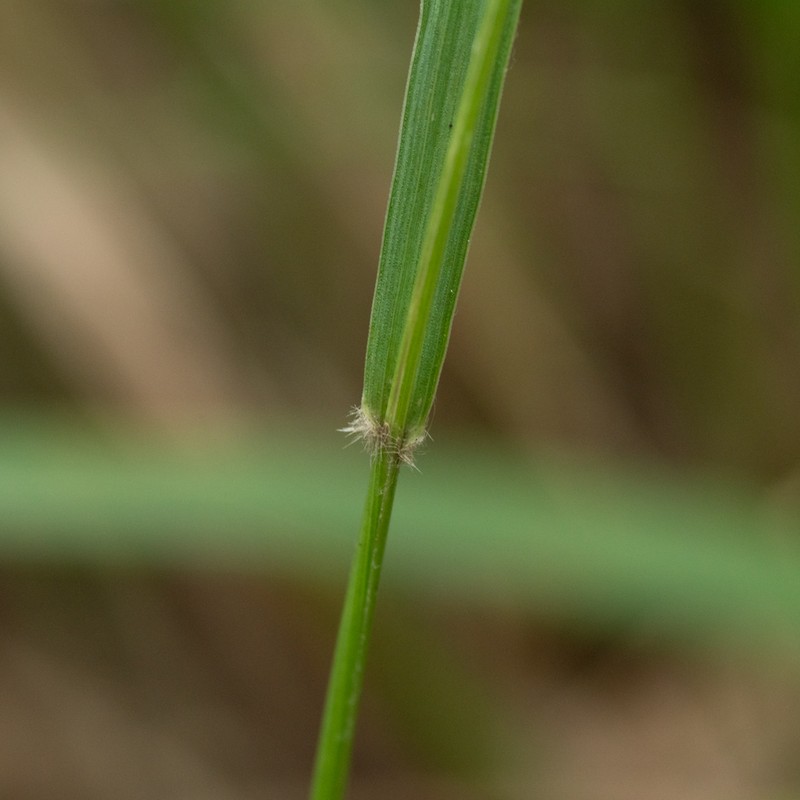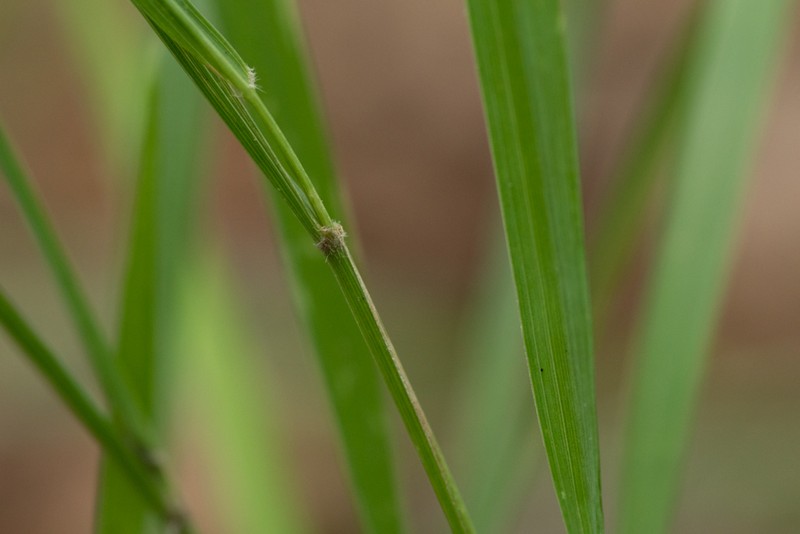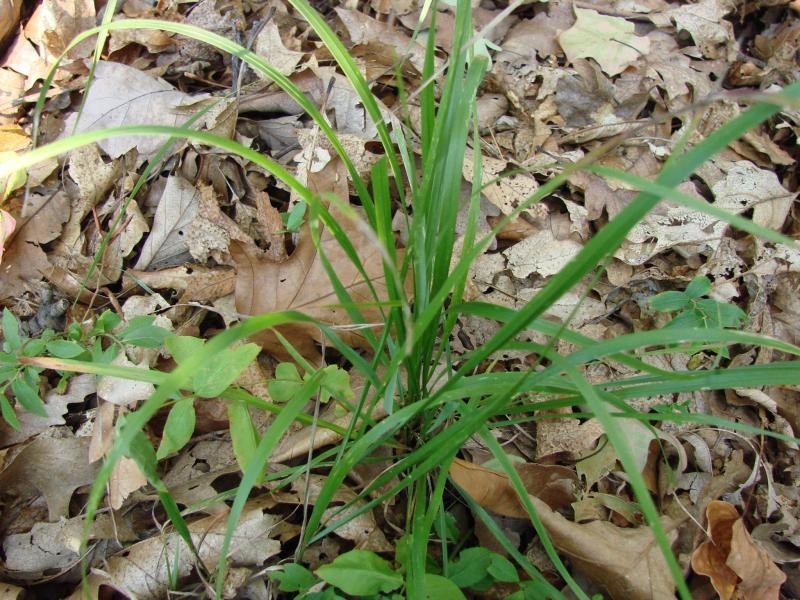Porter's Reed Grass
Calamagrostis porteri ssp. porteri None
- Class
- Monocotyledoneae (Monocots)
- Family
- Poaceae (Grass Family)
- State Protection
- Endangered
Listed as Endangered by New York State: in imminent danger of extirpation in New York. For animals, taking, importation, transportation, or possession is prohibited, except under license or permit. For plants, removal or damage without the consent of the landowner is prohibited.
- Federal Protection
- Not Listed
- State Conservation Status Rank
- S1S2
Critically Imperiled or Imperiled in New York - Especially or very vulnerable to disappearing from New York due to rarity or other factors; typically 20 or fewer populations or locations in New York, very few individuals, very restricted range, few remaining acres (or miles of stream), and/or steep declines. More information is needed to assign either S1 or S2.
- Global Conservation Status Rank
- G4T4
Apparently Secure globally - Both the species as a whole and the subspecies/variety are uncommon in the world but not rare; usually widespread, but may be rare in some parts of its range; possibly some cause for long-term concern due to declines or other factors.
Summary
Did you know?
This species was first collected by Elmira botanist T. F. Lucy on Sullivan's Hill in Chemung County from 1882 to 1897. It was not collected again until 1944 when Stanley Smith from the New York State Museum collected it behind the Elmira Reservoir on Hoffman Hill.
State Ranking Justification
There is one existing population of thousands of plants that has been known since 1895. There are seven historical populations known from the first half of the 1900s.
Short-term Trends
The short-term trend is stable with no large fluctuations in the number of populations.
Long-term Trends
This plant has always been very rare in New York with a very limited distribution. Most of the historically known populations have not been surveyed in detail, so the long-term trends are unclear.
Conservation and Management
Threats
Piles of raked leaves were dumped on part of the single known population but that situation was corrected. There are no other known threats at present.
Conservation Strategies and Management Practices
The known population should be periodically monitored for any changes in landscape management of the area.
Research Needs
There are no known research needs at this time.
Habitat
Habitat
The only known extant site for this grass in New York is a dry oak-hickory ridgetop forest with shaly soils. Historical collections also note dry or shaly woods and edges (New York Natural Heritage Program 2013). Roadsides and open woods; mostly at elevations of 1000-2000 feet (Rhoads and Block 2000). Dry rocky ridge-top forests (Gleason and Cronquist, 1991). Dry upland woods (Fernald, 1970).
Associated Ecological Communities
- Allegheny oak forest*
(guide)
A hardwood forest that occurs on well-drained sites in the unglaciated portion of southwestern New York. This is a forest of mixed oaks with a diverse canopy and richer ground flora than other oak communities in the state.
- Appalachian oak-hickory forest
(guide)
A hardwood forest that occurs on well-drained sites, usually on ridgetops, upper slopes, or south- and west-facing slopes. The soils are usually loams or sandy loams. This is a broadly defined forest community with several regional and edaphic variants. The dominant trees include red oak, white oak, and/or black oak. Mixed with the oaks, usually at lower densities, are pignut, shagbark, and/or sweet pignut hickory.
- Chestnut oak forest*
(guide)
A hardwood forest that occurs on well-drained sites in glaciated portions of the Appalachians, and on the coastal plain. This forest is similar to the Allegheny oak forest; it is distinguished by fewer canopy dominants and a less diverse shrublayer and groundlayer flora. Dominant trees are typically chestnut oak and red oak.
- Shale cliff and talus community*
(guide)
A community that occurs on nearly vertical exposures of shale bedrock and includes ledges and small areas of talus. Talus areas are composed of small fragments that are unstable and steeply sloping; the unstable nature of the shale results in uneven slopes and many rock crevices.
- Successional old field*
A meadow dominated by forbs and grasses that occurs on sites that have been cleared and plowed (for farming or development), and then abandoned or only occasionally mowed.
* probable association but not confirmed.
Associated Species
- Carex pensylvanica (Pennsylvania sedge)
- Cornus florida (flowering dogwood)
- Eurybia schreberi (Schreber's-aster)
- Geranium maculatum (wild geranium)
- Hepatica nobilis
- Maianthemum canadense (Canada mayflower)
- Maianthemum racemosum
- Quercus alba (white oak)
- Quercus montana (chestnut oak)
- Solidago nemoralis
Range
New York State Distribution
In New York this species is known only from the southern tier, from Tioga County west to Steuben County.
Global Distribution
Porter's Reedgrass reaches its northeastern limit in New York state. Subspecies porteri has a relatively narrow distribution through the Appalachians as far south as Kentucky and North Carolina.
Identification Comments
General Description
Calamagrostis porteri ssp. porteri is a grass that grows in loose clumps with stems to 1 meter tall. The leaves are 8 to 40 cm long and 2 to 8 mm wide (typically 3 to 6 mm), light green and glaucous on their upper surfaces, and darker green below. The summit of the leaf sheath (collar) and often the base of the leaf blade are bearded. The stem typically has 4 leaves. As in all grasses, the small, inconspicuous flowers occur in scaly structures called spikelets. In the genus Calamagrostis each spikelet contains only one flower. The flowers are borne in narrow, elongated panicles with individual spikelets from 3.5 to 5 mm long. The lower spikelet bract (lemma) is 3 to 5 mm long with an awn 3 to 4.5 mm long and bent or twisted below, protruding (exserted) from the bracts subtending the spikelet (glumes). Hairs are present on the hardened base of the floret (callus) in 2 separated tufts, 1.5 to 2 mm long (40 to 60% the length of the lemma). (Marr et al 2007)
Identifying Characteristics
Calamagrostis porteri ssp. porteri is a grass that grows in loose clumps with stems to 1 meter tall. The leaves are 8 to 40 cm long and 2 to 8 mm wide (typically 3 to 6 mm) with light green, glaucous upper (adaxial) leaf surfaces, and darker green lower (abaxial) surfaces. The summit of the leaf sheath (collar) and often the base of the leaf blade are bearded. The stem typically has 4 leaves. Flowers are borne in narrow, elongated panicles with individual spikelets from 3.5 to 5 mm long. The lower spikelet bract (lemma) is 3 to 5 mm long with an awn 3 to 4.5 mm long and bent or twisted below, protruding laterally (exserted) from the bracts subtending the spikelet (glumes). Hairs are present on the hardend base of the floret (callus) in 2 separated tufts, 1.5 to 2 mm long (40 to 60% the length of the lemma). (Marr et al 2007)
Best Life Stage for Proper Identification
Plant stems including mature fruit with intact glumes, lemmas, and leaves are needed for proper identification.
Similar Species
There are eleven other taxa of Calamagrostis in New York, but most of them are plants of wetland or lowland habitats. C. epigejos has callus hairs 1.5 to 2 times as long as the lemma and is known primarily from roadsides and waste places. C. perplexa is a globally rare species of upland forests, and is closely related to C. porteri. C. perplexa differs by having a lax or nodding panicle, longer callus hairs, and sometimes branching stems. Calamagrostis porteri ssp. porteri is our only subspecies.
Best Time to See
Mature fruits typically form in August, persisting until the first frost.
- Fruiting
The time of year you would expect to find Porter's Reed Grass fruiting in New York.
Porter's Reed Grass Images
Taxonomy
Porter's Reed Grass
Calamagrostis porteri ssp. porteri None
- Kingdom Plantae
- Phylum Anthophyta
- Class Monocotyledoneae
(Monocots)
- Order Cyperales
- Family Poaceae (Grass Family)
- Order Cyperales
- Class Monocotyledoneae
(Monocots)
- Phylum Anthophyta
Comments on the Classification
All of our Calamagrostis porteri are subspecies porteri.
Additional Resources
Best Identification Reference
Marr, K.L, R. J. Hebda, and C. W. Greene. 2007. Calamagrostis Adans. Pages 706-731 in Flora of North America Editorial Committee (Editors), Flora of North America, north of Mexico, Volume 24, Magnoliophyta: Commelinidae (in part): Poaceae, part 1. Oxford University Press, New York, NY, USA. 911pp + xxviii.
Other References
Gleason, Henry A. and A. Cronquist. 1991. Manual of Vascular Plants of Northeastern United States and Adjacent Canada. The New York Botanical Garden, Bronx, New York. 910 pp.
Holmgren, Noel. 1998. The Illustrated Companion to Gleason and Cronquist's Manual. Illustrations of the Vascular Plants of Northeastern United States and Adjacent Canada. The New York Botanical Garden, Bronx, New York.
Mitchell, Richard S. 1986. A checklist of New York State plants. Bulletin No. 458. New York State Museum. 272 pp.
New York Natural Heritage Program. 2024. New York Natural Heritage Program Databases. Albany, NY.
Rhoads, A.F. and T.A. Block. 2000. The Plants of Pennsylvania: An Illustrated Manual. University of Pennsylvania Press: Philadelphia, Pennsylvania. 1061 pp.
Weldy, T. and D. Werier. 2010. New York flora atlas. [S.M. Landry, K.N. Campbell, and L.D. Mabe (original application development), Florida Center for Community Design and Research http://www.fccdr.usf.edu/. University of South Florida http://www.usf.edu/]. New York Flora Association http://newyork.plantatlas.usf.edu/, Albany, New York
Links
About This Guide
This guide was authored by: Stephen M. Young, Elizabeth Spencer, Richard M. Ring.
Information for this guide was last updated on: October 25, 2022
Please cite this page as:
New York Natural Heritage Program. 2024.
Online Conservation Guide for
Calamagrostis porteri ssp. porteri.
Available from: https://guides.nynhp.org/porters-reed-grass/.
Accessed July 26, 2024.



